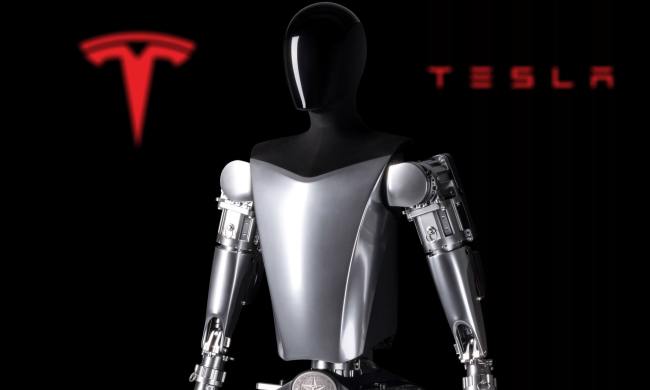According to statistical data, you’re almost certainly safer in a car driven by a computer than one driven by a human. Self-driving vehicles have the opportunity to bring multiple benefits — from safer driving experiences to less congestion in our cities.
With that said, autonomous cars won’t mean the end of road traffic accidents. Crashes can occur as the result of both human error and technical fault. While this list isn’t supposed to be comprehensive, these are the most significant crashes in self-driving (and semi-self-driving) car history. Hopefully, the right lessons can be learned from them.
Google Lexus SUV, July 2015

Google revealed that one of its self-driving cars had been involved in the first crash to injure a human. The incident involved one of Google’s self-driving Lexus SUV vehicles being rear-ended in Mountain View, CA, during testing. Three Google employees who were on board at the time suffered minor whiplash. The driver of the other vehicle reported neck and back pain.
This wasn’t the first accident involving one of Google’s self-driving cars, but it was the first one which could be classified as serious (or, in this case, semi-serious.) The common factor in all the crashes up to this point was human error on the part of other drivers. Mountain View police responded to the incident, but did not file an accident report.
Tesla Model S, January 2016

The world’s first apparent death in a semi-autonomous car took place in early 2016. Less widely covered than subsequent instances, it occurred in China, just three months after Tesla’s autopilot feature was introduced to the Chinese market.
This semi-autonomous feature is designed to offer an advanced driver assistance system (ADAS), although it still requires drivers to be attentive. The incident involved a Tesla Model S sedan — supposedly in autopilot mode — which crashed into the back of a cleaning vehicle while driving in clear weather, resulting in the death of its 23-year-old driver Gao Yaning. No attempt at braking was made.
“The autopilot program’s slow response failed to accurately gauge the road conditions ahead and provide instructions,” claimed a lawsuit filed against Tesla. Tesla said that it was unable to confirm whether autopilot was engaged at the time, since the damage caused by the collision left the car “physically incapable of transmitting log data to our servers.”
A police investigation found that Yaning had failed “to drive safely in accordance with [autopilot] operation rules” (read: paying full attention to the road), while also blaming the street sweeping vehicle’s “incomplete safety facilities.”
Google Lexus SUV, February 2016

One of Google’s self-driving Lexus SUV cars was involved in a non-fatal crash with a bus on Silicon Valley’s El Camino Real road. This was the 18th accident involving a Google autonomous vehicle, but is significant because it was the first time that the Google vehicle is apparently at fault.
The incident occurred while Google’s car is merging back into traffic after stopping to avoid an obstacle. It stuck the side of the bus while doing so. The SUV suffered superficial damage to one wheel, its side-mounted sensors and bodywork.
“We clearly bear some responsibility, because if our car hadn’t moved there wouldn’t have been a collision,” Google said in a statement. “From now on, our cars will more deeply understand that buses (and other large vehicles) are less likely to yield to us than other types of vehicles, and we hope to handle situations like this more gracefully in the future.”
Tesla Model S, May 2016

The first U.S. death involving a semi-autonomous car occurred when 40-year-old Ohio resident Joshua Brown’s Model S Tesla was in autopilot mode on the highway.
Unfortunately, the car’s sensors failed to recognize a white 18-wheel truck and trailer crossing the highway against the bright sky background. As a result, the Model S drove full speed under the trailer, which impacted the car’s windshield.
“Autopilot is getting better all the time, but it is not perfect and still requires the driver to remain alert,” Tesla said in a statement, while also noting that it was “beyond saddened” by Brown’s death.
Uber self-driving Volvo, March 2018

An autonomous car killed 49-year-old Arizona resident Elaine Herzberg in what is believed to be the first fatal U.S. crash involving a pedestrian and self-driving vehicle. The incident took place at night when Herzberg was crossing the road with her bicycle outside of a sanctioned crosswalk, and has since been deemed “entirely avoidable.”
The Uber test driver was not looking at the road in the moments leading up to the collision, and according to a recently released police report, was watching Hulu until 0.5 seconds before the crash. “Our hearts go out to the victim’s family,” the company said in a statement. “We are fully cooperating with local authorities in their investigation of this incident.” Uber temporarily suspended autonomous road testing in the aftermath of the accident.
Tesla Model X, March 2018

Less than a week after the Uber self-driving car crash, another semi-autonomous vehicle fatality took place — once again involving a Tesla vehicle. On this occasion, a Tesla Model X on autopilot crashed in Mountain View, killing the 38-year-old driver, Apple software engineer Wei Huang.
According to Tesla, Huang received “several visual and one audible hands-on warning earlier in the drive, and the driver’s hands were not detected on the wheel for six seconds prior to the collision.” However, no intervention was taken and the car collided with the concrete divider in the road.
Updated on June 22 to add news that the Uber crash was deemed entirely avoidable, and that the driver was watching Hulu.


